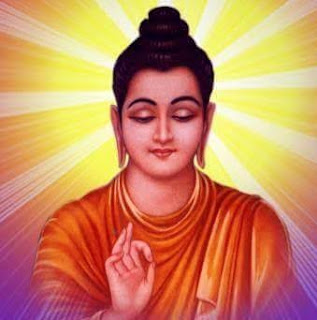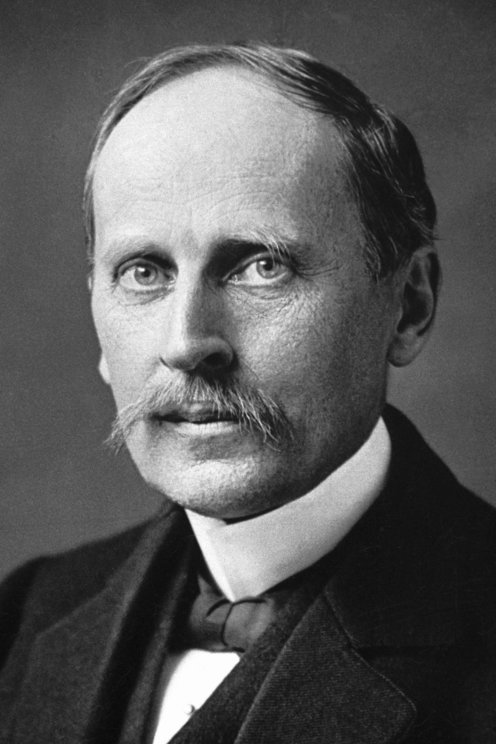 |
| Gautam Buddha |
Gautama Buddha was a Shramana (ascetic) and sage] on whose teachings Buddhism was introduced. He is also known as Siddhartha Gautama, Shakyamuni Buddha, or simply Buddha by the title ‘Buddha’. He is thought to have lived and taught in the eastern part of ancient India sometime between the 6th and 4th centuries BC. Gautama Buddha taught moderation between austerities and strict austerities in accordance with the norms of the labor movement prevalent in his region. He later taught in other parts of eastern India, including Magadha and Kosala. Gautama Buddha is the central character of Buddhism. Buddhists consider him to be that enlightened or divine teacher, Who has attained complete enlightenment and has helped to bring about the rebirth of conscious beings and the end of sorrow by sharing his insights with everyone. Buddhists believe that the life story of Gautama Buddha, The details of the conversation, the monastic rules are formulated and memorized by his followers after his death. About 400 years later, various collections known as his advice were first recorded from oral tradition. : !!
Historian Siddhartha Gautam: !!
Maps of the kingdoms and cities of ancient India, contemporary with the Buddha Researchers are hesitant to make any weak claims about the historical facts of Buddha's life. Most of them admit that Buddha was alive during the reign of Mahajanapada during the reign of Bhima, the ruler of the Magadha Empire. Taught and founded a monks' association (c. 558 - c. 491 BCE), He died early in the reign of Ajatsattu, the successor of Bhima. As such, Buddha was the youngest contemporary of the Jain Tirthankara Mahavira. Apart from Vedic Brahmanism, the life of the Buddha was contemporary with the rise of influential Shramana thought, such as Ajibaka, Charpak, Jainism, and Anjan.
Sixty-two such doctrines have been stated in the Brahmajal Sutta. Influential philosophers like Mahabir, Puran Kassap, Makkhali Gosal, Ajit Keshakambali, Pakudh Kachchayan, and Sanjay Belthiputta preached like them in that era. These have been mentioned in the Samannafal Sutta. The Buddha must have been aware of their doctrine. Sariputta and Moggallan, the two main disciples of the Buddha, were the main disciples of the skeptic Sanjay Belthiputra in his early life. Tipit is often seen taking part in debates with supporters of his rival ideology. That is to say, the Buddha himself was one of the contemporary Shramana philosophers. Evidence has also been found that two philosophers named Alaar Kalam and Uddak Ramputta are also historical characters. Most likely they taught the Buddha two different methods of meditation.
Although the term "birth, adolescence, asceticism, spiritual inquiry, enlightenment, teaching and death" is generally accepted in the Buddha's biography, Consensus on the veracity of various accounts is rarely found in traditional biographies. There is no definite information about the period of birth and death of Gautam Buddha. Most historians of the early twentieth century date the period from 563 BC to 483 BC as his lifetime. In a speech at a conference on the biography of the Buddha in 1986, most of the time he estimated the period of the Buddha's death to be between 400 BC. These alternative doctrines are not recognized by all historians. There is evidence from ancient scriptures that Siddhartha was born into the Gautama Shakya people.
In the 5th century BC, the group ruled the northeastern part of the Indian subcontinent as a small democracy or group system, culturally and geographically isolated from the mainland. Siddhartha Gautama's father, Suddhodhana, was an elected tribal chief who was in charge of the state administration. According to Buddhist tradition, Gautam was born in Lumbini, Nepal, and grew up in Kapilabastu. No written references are found about Gautam's period or until a few centuries after his death. About two centuries later, Emperor Ashoka made a pilgrimage to the birthplace of Gautam and erected a pillar at Lumbini. Another of his columns mentions various Dhamma books, which prove the existence of a Buddhist tradition written in the Maurya period. Twenty-seven birch bark Gandhara Buddhist manuscripts, written in the Gandhari language from the third to the first centuries BC and inscribed in Kharoshthi script, are the oldest surviving Buddhist manuscripts discovered from Hadda near Jalalabad in eastern Afghanistan. : !!
Biography
Various conflicting traditional biographies are the source of Siddhartha Gautam's biography. The epic Buddhacharita, written by Ashwaghosh in the second century, is the first complete biography of the Buddha. Lalitvistara Sutra, written in the third century, is the next book on the biography of Gautam Buddha. The Abhiniskrama Sutra of the Dharmagupta tradition, written in the third to sixth centuries, is a great biography of the Buddha. The last is the Nidanakatha of the Theravada tradition written by Buddhaghosa in the fifth century. Although the Jataka Mahapadana Sutta and the Acharyabhuta Sutta do not have a complete biography of the Buddha as part of the Tripitaka, there are some selected parts. All of these traditional biographies are usually full of miraculous and supernatural stories. In Mahabastu, etc., the Buddha is described as the supreme transcendental character, free from all burdens of the worldly world.
But even so, from all these texts, Khutinati has been able to shed light on various aspects of the Buddha's life by combining general details and removing miraculous myths. The Indians of ancient times were indifferent to history and chronology but were more concerned with philosophy. This style can be seen in Buddhist texts, where his teachings and philosophy are described with much more important than the important events of his life. These texts provide insights into the culture and daily life of ancient India. In any case, there is no doubt about the historicity of the Gautama Buddha, even though very little information is based on miracle stories. : !!
First life: !!
Siddhartha was born in the city of Lumbini
Siddhartha Gautam was the son of Shuddhodhana of the Kshatriya dynasty, the elected chief of the Shakya Republic. His mother Mayadevi was a princess of the Kolya people. According to the Shakyas, Mayadevi gave birth to Siddhartha under a willow tree in the village of Lumbini in the Tarai region of present-day Nepal, on her way from Kapilabastu to her ancestral home. Mayadevi died at the time of her birth or on the seventh day. On the fifth day of the child's birth, eight Brahmins were invited to name the child Siddhartha. At that time, a saint named Asit, who came from the mountains, saw a newborn child and predicted that this child would later become a Rajchakravarti or a Siddha Sadhak.
The only youngest invited Brahmin, Kaundinya, clearly states that, This child will later attain enlightenment. After the death of his mother, he was brought up by his mother-in-law Mahapajapati Gotami. At the age of sixteen, his parents married him to Yashodhara, a beautiful daughter of the Koliya people, and gave birth to a son named Rahul. Siddhartha spent the first twenty-nine years of his life as a prince. According to Buddhist scriptures, Father Suddhodhana began to realize that material prosperity could not be the goal of life, despite all the luxuries in his life. : !!
Exodus
Siddhartha's Mahabhiniskrama by Abanindranath Tagore It is said that at the age of twenty-nine, Prince Siddhartha, after a few trips from the palace, was an old man. See a sick man, a dead man, and a monk. When Siddhartha, who was completely inexperienced in worldly sorrows, asked his charioteer Channa about them, Channa explained to him that the destiny of all human beings is that they will one day grow old, sick, and die. Channa told him about the monk wearing a dilapidated yellow bus with a shaved head, that he had given up his domestic life for the misery of the people, he was the monk. Saddened by this new experience, Siddhartha decides to live the life of a monk, determined to conquer old age, decay, and death. Disillusioned with the world, Siddhartha left the palace one night with his beloved horse Kanthak and Sarathi Channa, saying goodbye to his sleeping wife, son, and family. Leaving the palace, he reached the end of the forest, left his royal robes, cut off his long hair with a sword, and shaved his head. After saying goodbye to Kanthak and Channa, he left for the palace. : !!
Evangelism
Dhamekh Stupa was built at Sarnath, the place where Gautama Buddha first taught the five disciples After attaining enlightenment, Gautam Buddha was met by two traders from the Balkh region, Tapusas, and Vallik, who offered him honey and barley. These two were the first ordinary disciples of the Buddha. The Buddha was eager to meet his former teachers Alaar Kalam and Uddaka Ramputta to discuss his newly acquired knowledge, but both of them had passed away by then. He then set out for the deer park at Rishipatan near Varanasi with five ex-companions who had abandoned him. He met them and gave them his first education, which is known in the Buddhist tradition as Dharmachakrapravratna. In this way, the first Buddhist association in history was formed with them.
Then a fire-worshiping Brahmin named Mahakashyap and his followers joined the association.
After attaining enlightenment as promised to the Buddha emperor Bhimsa, two disciples of Sanjay Belabhviputta joined the Sariputta and Maudgalyayan Sangha. A year after attaining enlightenment, Suddhodhana invited his son to the city of Kapilabastu. Once upon a time, Prince Gautam used to beg for food in the capital. In Kapilabastu, his son Rahul initiated Shramana to him. Besides, his two relatives named Ananda and Anuruddha accepted his discipleship. Apart from Mahakashyap, Sariputta, Maudgalyayan, Ananda, Anuruddha and Rahul, Upali, Mahakatyayan, Punna and Subhuti were the ten main disciples of Buddha. Three years later, when a dispute arose between the Shakyas over the Rohini River, the Buddha settled the dispute. When Suddhodhana died within a few days, Gautama Buddha's mother-in-law Mahapajapati expressed his desire to join the Gotami Sangha.
Although Gautam initially agreed to join the women's association, he happily allowed women to join the association five years later as nuns. : !!






0 Comments